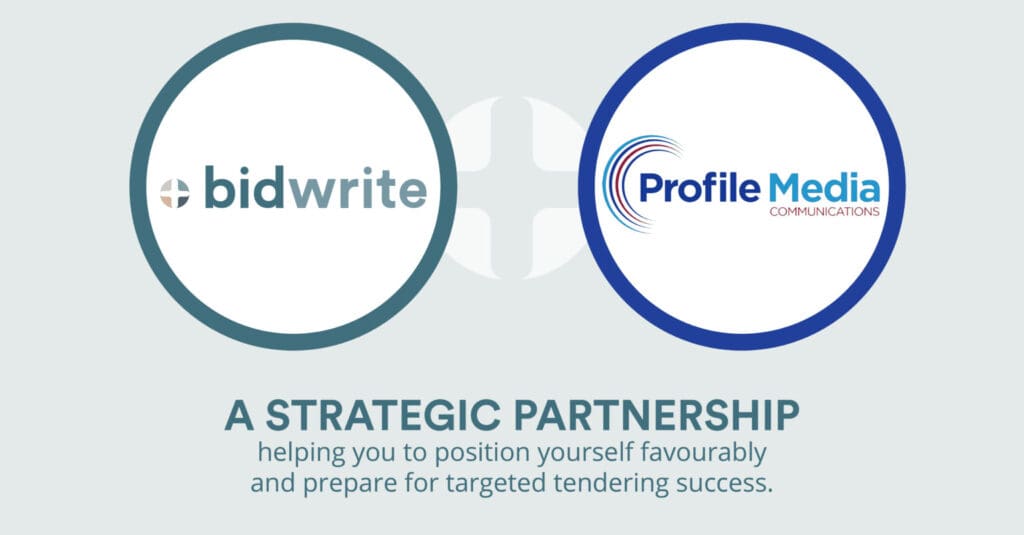RELATED BLOG: Peter Blunden first introduces the concept of a left-shifted growth orientation in relation to your tender strategy in Left-shifting your way to revenue growth – Part 1.
How do companies consistently outperform others? This seemingly simple question has interested me for 20 years as I have helped global businesses compete for multimillion and billion-dollar tendered contracts across the public and private sectors.
Although the execution elements for achieving growth are deeply contextual, the framework for sustained growth is more enduring in nature. And although many attempts to issue the definitive ‘rule book’ for growth have been made, one that resonates strongly with me is ‘Choosing to grow: The leader’s blueprint’ by McKinsey and Company 1.
A strategic orientation needs bedfellows
My first piece on this topic focused on the initial element of a three-step growth process outlined by the authors – the importance of making a conscious choice to set an aspirational mindset and culture. This creates expectations, encourages action and aligns a workforce. But what then?
Intention only goes so far. It means nothing if not tightly connected to planning and execution. The authors describe these consecutive stages as ‘activating growth pathways’ and ‘executing with excellence’.
Activating growth pathways is enabled by expanding core business, innovating into adjacent industries or geographies, and making calculated investments into strategically aligned breakout businesses.
Executing with excellence is the critical final stage. This is supported by growth focused operating models and resource allocation, the ability to quickly acquire complementary skills and investment in the development of core functional capabilities.
What does this have to do with tendering?
At first glance, these concepts seem far removed from the process of developing and submitting a winning tender response. Growth planning and related strategy initially occurs at the very left, or early stages of the business development process. In contrast, tendering is most often perceived as a transactional or administrative function that occurs further to the right, often as a reactive part of the sales or work-winning process.
But if your business has serious growth aspirations and is reliant on tendering outcomes to produce the lion’s share of your annual revenue, why is it that the bidding function is often not aligned as part of your growth planning?
Bidding is where the rubber meets the road, where contracts (and revenue) are won and lost. In simple terms, tendering professionals act as the translator between what your company offers and what your clients need. To do their job well, good bidding professionals are acutely aware of your competition and how you compare, shifts in industry and client demands, what it takes to win, and how buyers think feel and act. And they are competitive by nature, hard-wired with only two settings – win or lose. If you are truly committed to growth, I’d argue that these are very valuable perspectives for planning.
Look left to grow right
Too often I’ve seen great companies with huge potential for sustained and profitable growth stymied by a disconnect between the strategy/planning function and their work-winning teams. This creates misalignment, poor staff retention, a rapidly escalating opportunity cost and ultimately, a great deal of frustration. Throughout my career I’ve developed the notion that this frustration is less about the ‘losses’. After all, while they may hurt, they are temporary and a natural part of the cut and thrust of work-winning and a growth mindset.
My view is that the real frustration rests with the inability to unlock potential. This can be overcome, but not with a singular focus on the work-winning or right-hand side of the business development process. While bidders can sometimes work miracles, the reality is that the potential of your work-winning function is limited by what comes before.
Two key takeaways
Having wrestled with these ideas for the better part of two decades, I’ve distilled them into an approach that makes sense to me and delivers results for the organisations I’ve worked with.
Here are my two key takeaways:
- Sustained growth doesn’t just happen. It always begins with a firm and focused shift to the left. This starts with instilling a growth mindset supported by clear strategies that provide multiple pathways to growth. In turn, these need to be supported by an equally clear commitment to developing the operational models and skills required to execute them.
- Growth planning doesn’t happen best in isolation. A huge amount of IP is hidden within your business. In a commercial context, growth is ultimately measured by revenue. So keep counsel with your key revenue winners, the people at the coal-face of revenue generation. Factor them into your planning and let their insights help you unlock the true potential of your business.
If your business is stuck on the hamster wheel of delivery rather the bigger picture and the worlds your customers operate in, we can help you change perspective, plan a path forward and increase your chances of winning the contracts you aspire to. Like I said in Part 1, doing so requires you to think left, not right. But this simple left-shifting orientation can unlock a huge amount of latent growth and, in doing so, bring substantial rewards.
- Birshan M, Cvetanovski B, Doherty R, Freundt T, Gaeta A, Kelly G, Roth E, Seth I. and Zucker, J. Choosing to grow: The leader’s blueprint. July 7, 2022, accessed June 15, 2023. https://www.mckinsey.com/capabilities/growth-marketing-and-sales/our-insights/choosing-to-grow-the-leaders-blueprint







